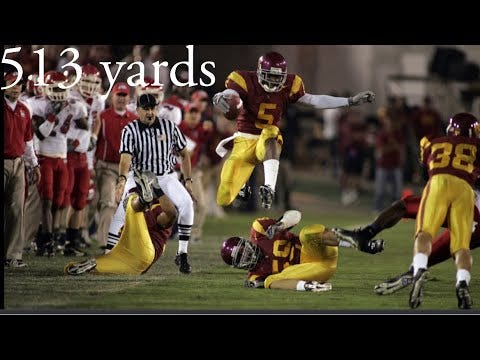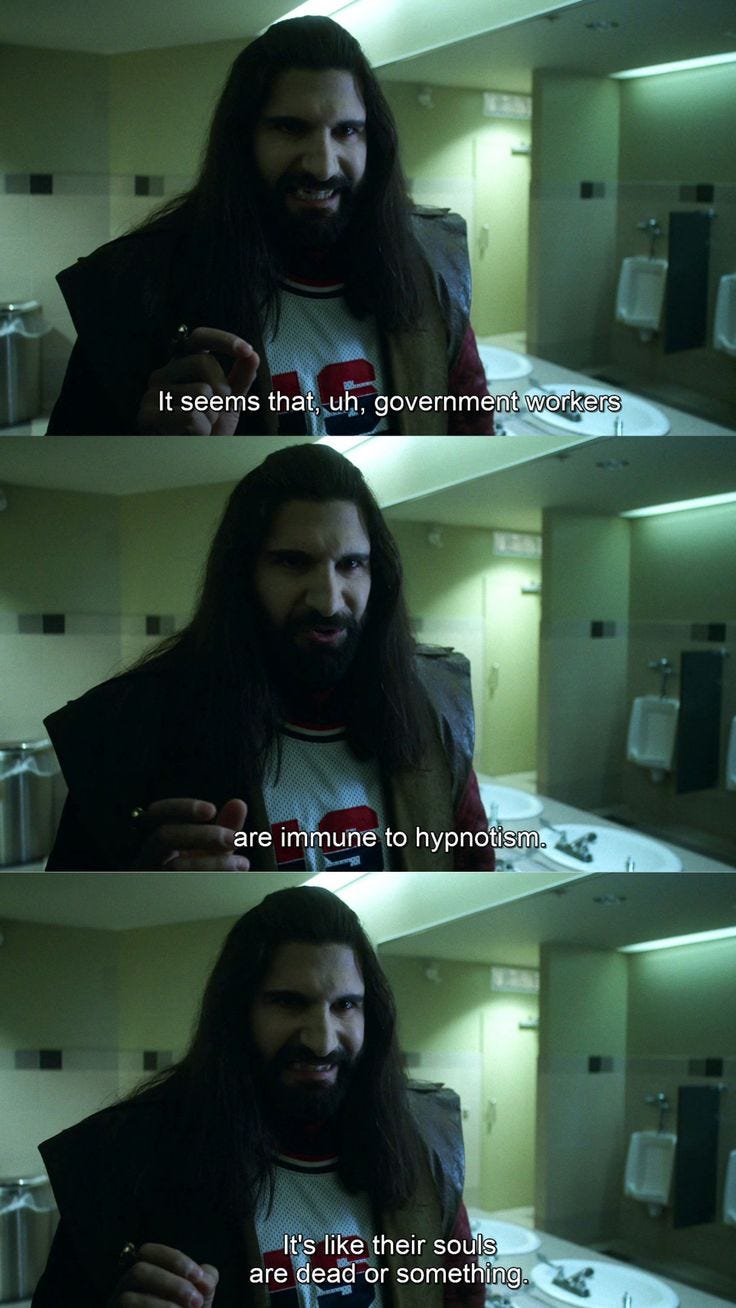No one who ever experienced Reggie Bush’s 2005 season at USC needed the running back’s name included on official lists of Heisman Trophy award winners or mentioned at the annual presentation to know Bush was among its all-time greatest recipients.
Hell, his omission from such mention almost spoke louder than if Bush was listed. The exclusion separated Bush into a class of his own, which is what his performance in ‘05 also accomplished.
All that said, the Heisman Trust returning the 2005 trophy to Reggie Bush on Wednesday was the right decision and a necessary correction of a nearly two-decade mistake.
Governing bodies stripping teams of wins and championships, or in this instance, an athlete of his accomplishments, has always struck me as an empty gesture. It’s not as if Louisville being stripped of its 2013 NCAA Tournament title means Michigan won the championship, or that Bush’s 2005 Heisman Trophy was instead giving to Texas quarterback Vince Young.
Plus, everyone paying attention at the time saw what happened. Barring the NCAA or Heisman Trust deploying Nandor The Relentless to hypnotize those who watched the 2005 college football season, we know how special Reggie Bush was.
In my 30 years watching college football, Bush is among exclusive company whose play transcended the level of greatness typical of most Heisman winners into a stratosphere of true legendary performance.
Charlie Ward is in that category for me. So is Cam Newton. The most recent is DeVonta Smith. If those three each occupy a space on my lifetime’s Heisman Trophy Mount Rushmore, Reggie Bush is the quartet’s Abraham Lincoln: A giant-among-giants.
Bush’s statistics in 2005 are eye-popping, even presented without context of the era. The spread and air-raid revolutions that reshaped the game were still in their infancy. Mike Bellotti was still two years away from tabbing an offensive coordinator from New Hampshire named Chip Kelly for the same post at Oregon, for example.
USC still operated out of what we often deem a pro-style offense, though the term has become antiquated in 2024. That is to say, quarterback Matt Leinart took snaps from under center after huddling and the Trojans typically lined up a tight end with both Bush and LenDale White in the backfield.
Bush rushed for 1,740 yards on just 200 carries for a staggering 8.7 yards per rush with 16 touchdowns on the ground. Remove the Rose Bowl Game, since it followed Heisman voting, and Bush gained 1,658 yards on 187 carries — 8.9 ypc — with 15 touchdowns.
Part of what goes into the Heisman goes beyond box scores, and few ever demonstrated that as nicely as Reggie Bush. It wasn’t just that he put up monster numbers; he did so with a panache that etched his play into your memory in an indelible way.
It’s not out of the norm for me to encounter fans and media who can rattle off where they were for certain Bush performances — most notably his November 19, 2005 showing against Fresno State.
Carrying was only part of Bush’s repertoire, too. He caught 31 passes in the regular season for almost 400 yards with two touchdowns; returned 23 kicks and 18 punts, and took one back to the house for a score.
Reggie Bush was a multifaceted playmaker in a way few running backs since have come close to matching, even as the position’s evolved to do more than just tote the rock.
Coincidentally, NFL coordinators’ insistance on sticking with this offensive approach en masse only until the last half-decade or so likely hindered Bush’s potential in the pros. A scheme utilizing more frequent shotgun or Pistol, deploying the running back as a regular receiver and attacking from sideline-to-sideline would have been a better use of Bush’s skill set than trying to make him a traditional, between-the-tackles ball-carrier.
There is perhaps no better example in today’s NFL than Christian McCaffrey, coming off an MVP-caliber 2023 for the San Francisco 49ers.
Exactly 10 years after Bush’s Heisman Trophy campaign at USC, McCaffrey delivered what I consider one of only two seasons from running backs approaching that of Reggie Bush’s 2005.
In 2015, McCaffrey rushed for more than 1,800 yards before reaching the hallowed 2K mark in that season’s Rose Bowl Game. He eclipsed 500 yards receiving, returned more than 1,000 yards on special teams with a kickoff ran back for a score and he threw for two touchdowns.
A poorly kept secret amid McCaffrey’s run to the Heisman being Heisman runner-up was that he wore No. 5 in recognition of Reggie Bush. It’s no coincidence that the running backs responsible for the two most impressive all-around seasons since Bush — the other being CJ Spiller for Clemson in 2009 — both took influence from and have direct ties to the USC legend.
In Spiller’s case, he was originally set to sign with USC and be an heir to Bush’s role.
Oddly enough, neither McCaffrey nor Spiller won the Heisman — Spiller actually wasn’t even a finalist. But that dovetails into a whole other discussion about how voters view the Heisman Trophy in the last 10-15 years.
As deep as I’ll dive into that topic is to note that Heisman voting is ultimately subjective. To that end, no other play has ever been as subjectively excellent as Reggie Bush.
That’s one key reason I have never taken seriously arguments about Vince Young winning the 2005 Heisman. Make no mistake: Young was fantastic in leading the Longhorns to the BCS championship, culminating in one of the single-best individual performances I have ever watched in the 2006 Rose Bowl Game.
Young’s retroactive Heisman candidacy also hinges in part on that Rose Bowl, which occurred a month after the Heisman presentation. What’s more, for as revisionist history may dismiss Bush’s performance in that title matchup, he averaged more than six yards per carry for 82 in total, scored a touchdown, had the best receiving game of his career with six catches for 95 yards.
Bush put up almost 300 yards of total production against Texas. He was just so good the rest of that season, it could be viewed as underwhelming. That alone may be the strongest endorsement of Bush’s 2005 as the best Heisman season in any of the last 30 years.




